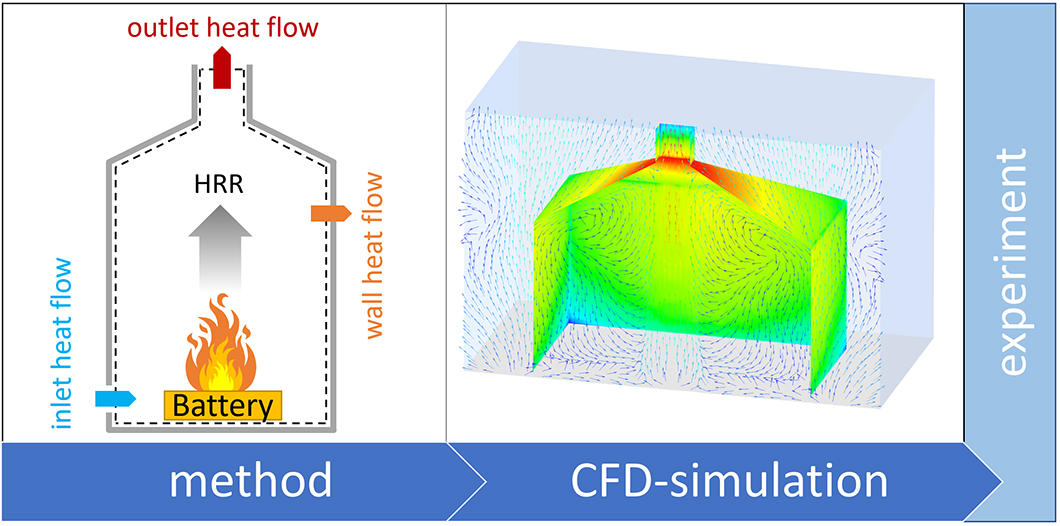
Method to fire test: Usage of CFD-Simulations to Design a test facility
Source: BAM, department Safety of Structures
Lithium-Ion batteries (LIB) are an important key technology within the energy transition as they are used as traction batteries in electric vehicles as well as stationary energy storage systems. In case of battery damage, an accelerated self-heating process called thermal runaway can occur and lead to emissions of heat and toxic gases. From a fire safety point of view, the access of potential safety risks is crucial. The Heat Release Rate (HRR) is the most important parameter to characterize a fire so that a precise measurement is essential for risk analysis. For large scale fires, the most common measurement method is based on the oxygen consumption. The changed combustion chemistry of LIB-fires (compared to fires of hydrocarbons) can lead to uncertainties when using this method. The Sensible Enthalpy Rise Approach (SERA) is based on balancing of energy flows inside a test facility, which is done by temperature measurements at the walls and at the in- and outlet as well as by velocity measurements. Since the 1970s the method is used for HRR measurement of small samples, e.g. of materials used in aviation.
This paper investigates the suitability of the method to measure the HRR of largescale LIBs. Therefore, CFD-simulations with ANSYS CFX were performed in a virtual test facility. Different fire curves were released as hot gas and temperatures as well as velocities were determined like in a measurement in a real test. Corresponding to SERA, the HRR could be calculated and compared to the predefined curve, so that the impact of certain parameters on the differences between SERA and the target could be investigated.
The results show that great importance should be attached to the calibration of the test facility by predefining a HRR: the calibration fire should be of the same order of magnitude as the samples to be measured and calibration and tests should be performed under same ventilation conditions. Furthermore, the positioning of the wall temperature measurement point is an important parameter influencing the measurement result. Recommendations could be derived from the simulation results which were taken up in the design of a real test apparatus in the research project “Safety of urban underground transportation areas considering new energy carriers” (SUVEREN).
CFD-analysis of Sensible Enthalpy Rise Approach to determine the heat release rate of electric-vehicle-scale lithium-ion batteries
Sascha Voigt, Felix Sträubig, Stephan Palis, A. Kwade, Christian Knaust
published in Fire Safety Journal, Vol. 114, page 102989
BAM department Safety of Structures


